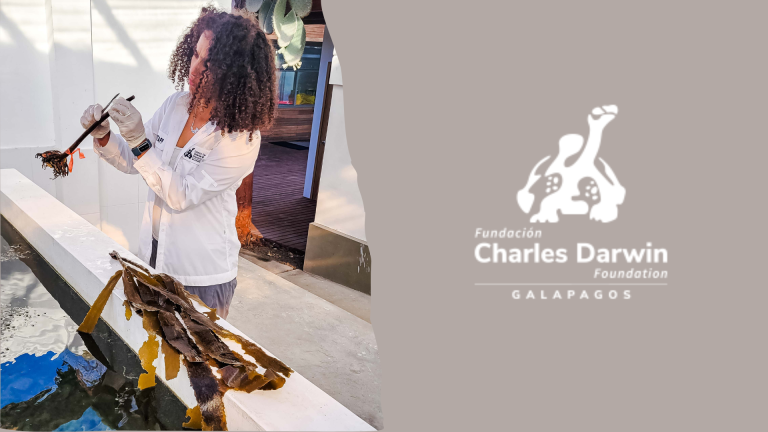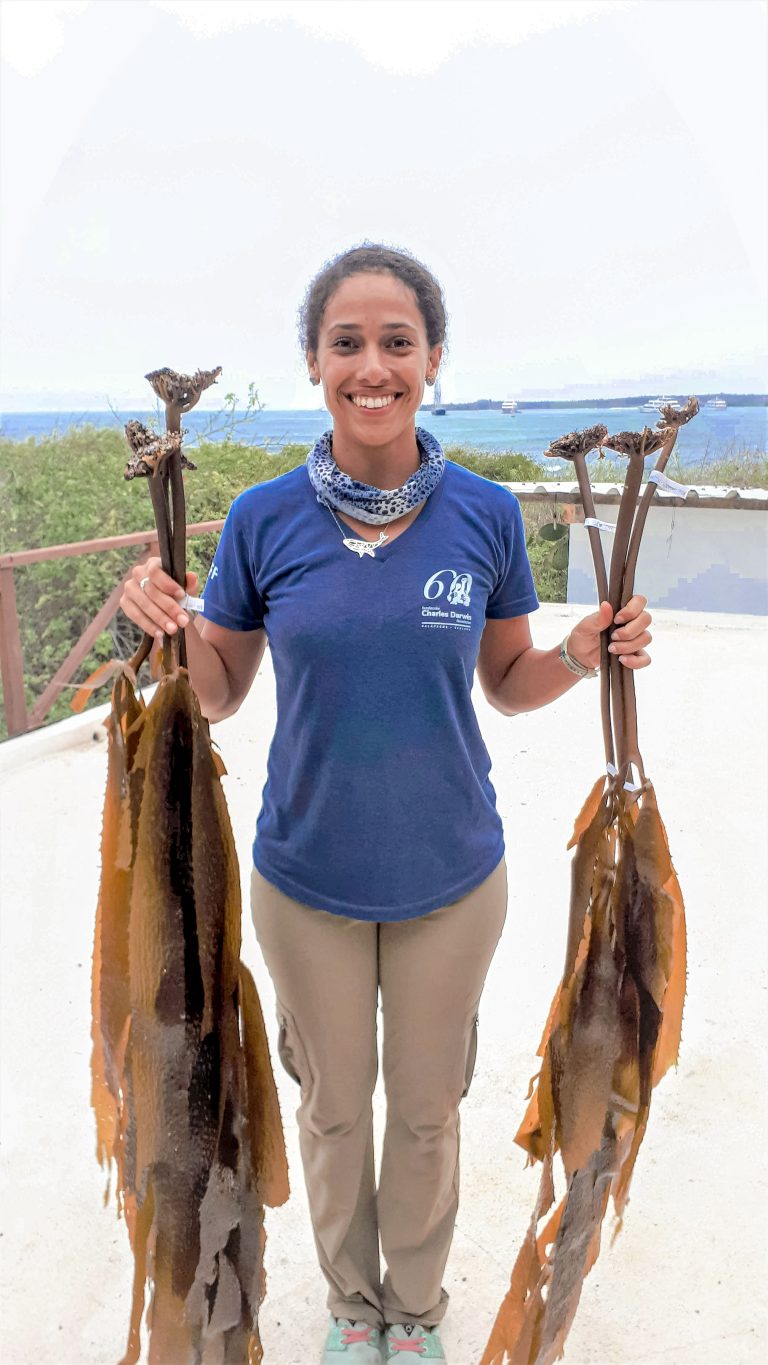

A project led by PhD candidate Salomé Buglass has found an extensive kelp forest covering the summit of a seamount in the south of the Galápagos archipelago. This discovery could be a new kelp species for the region, and even for science.
In a new paper for Marine Biology, Buglass and the international team working on the Seamounts project highlight the importance of this finding for understanding marine life in the region.
“This is the first time that such an extensive and dense kelp forest has been registered in this part of the Galápagos and at such depths,” says Buglass, who is a senior scientist at the Charles Darwin Foundation and Research Station, in addition to pursuing her PhD at UBC. “What we found looks very different from the Eisenia galapagensis kelp species already known in this area and is almost twice the size, so there is a possibility that we are looking at a different and potentially new species for the region.”


Salomé Buglass holds some of her kelp samples
Kelp are large brown macroalgae that can form dense year-round underwater canopies known as kelp forests. They are among the world’s most productive and biodiversity-rich ecosystems.
As a cold water species, most kelp forests are exclusively found in temperate and polar coastal regions and usually at shallow depths because of their permanent need for light. However, the kelp forest uncovered in the Galápagos Marine Reserve is situated in a tropical region and at more than 50 meters depth.
As standard scuba diving is restricted to a depth of 40m, the team had to utilize remotely operated vehicles (ROVs) and submersibles to observe the kelp and to collect samples.


Until recently, Eisenia galapagensis was the largest seaweed recorded in the archipelago, and the first tropical kelp species recorded by science. But very little is known about its biology or ecology, as it has been scarcely observed since the 1982/83 El Niño marine heatwaves, and was declared “endangered” by the International Union for Conservation of Nature (IUCN).
Due to its scarcity, the team were unable to obtain a fresh genetic sample of E. galapagensis to compare to their specimen. However, visual analysis suggests that while the newly discovered kelp is also from the Eisenia genus, it may be a distinct species that has not previously been documented.
Given the importance of kelp forests to marine habitats, and their global decline due to the impacts of climate change, the authors emphasise that further exploration and research on these tropical kelp ecosystems is vital.
“Knowing that there are entire marine forests teeming with life that we were unaware of at just 50m depth, serves as a reminder of how little we know about deep-sea biodiversity, and how much remains to be explored, discovered, learned about and protected,” adds Buglass.


